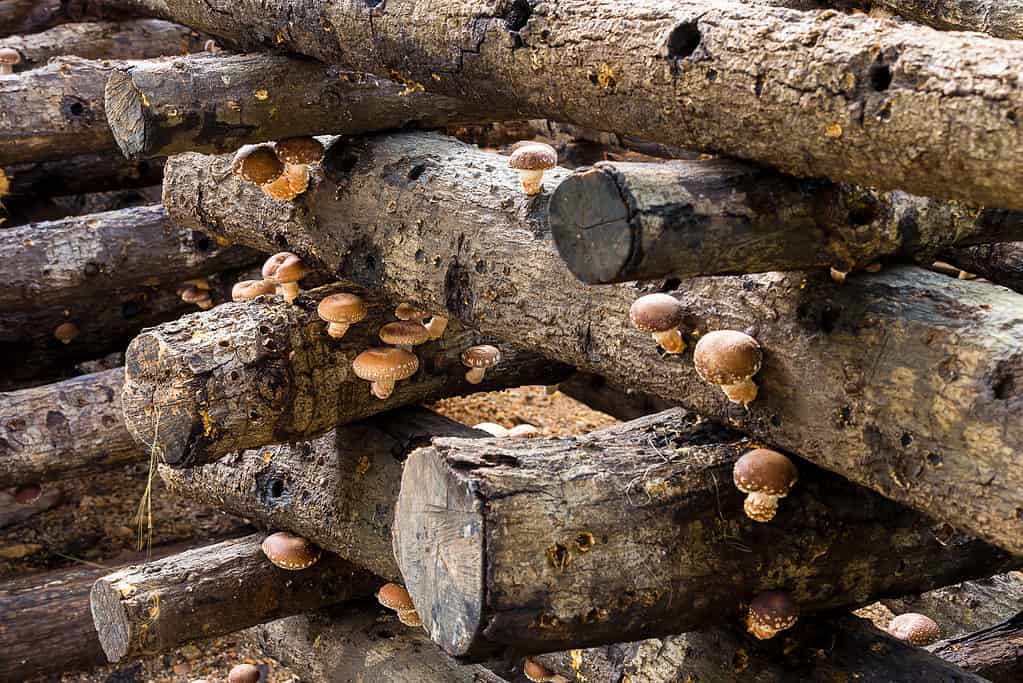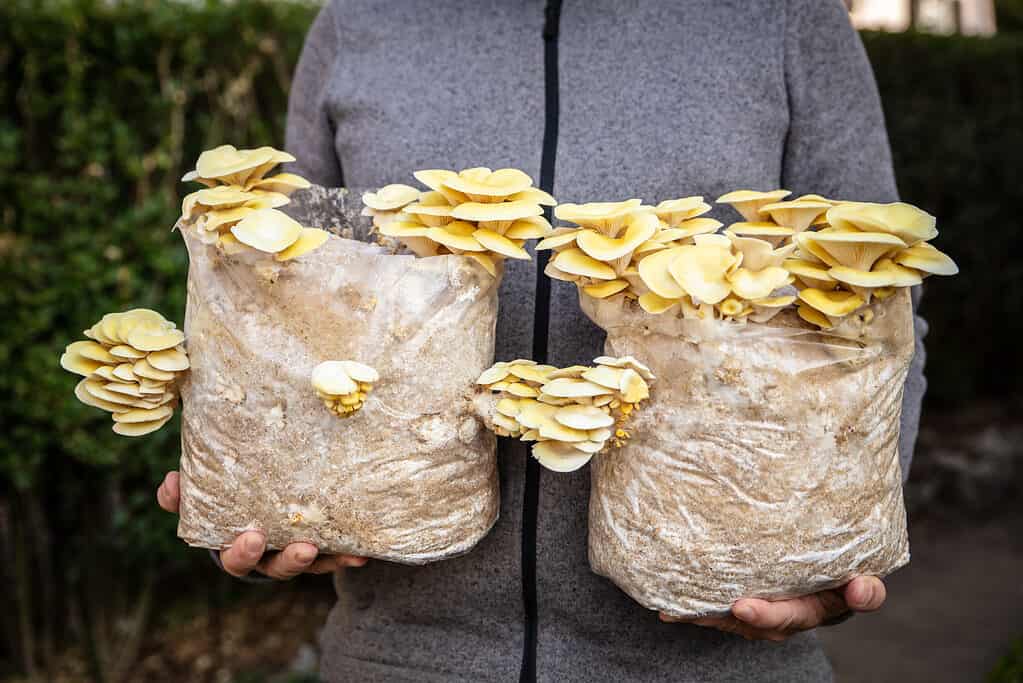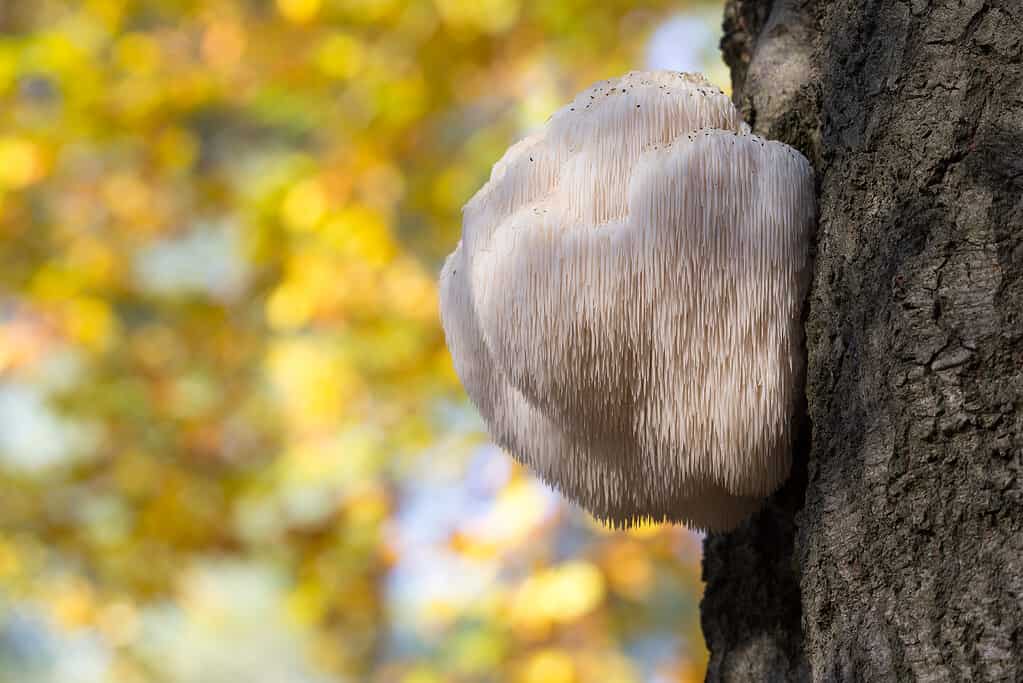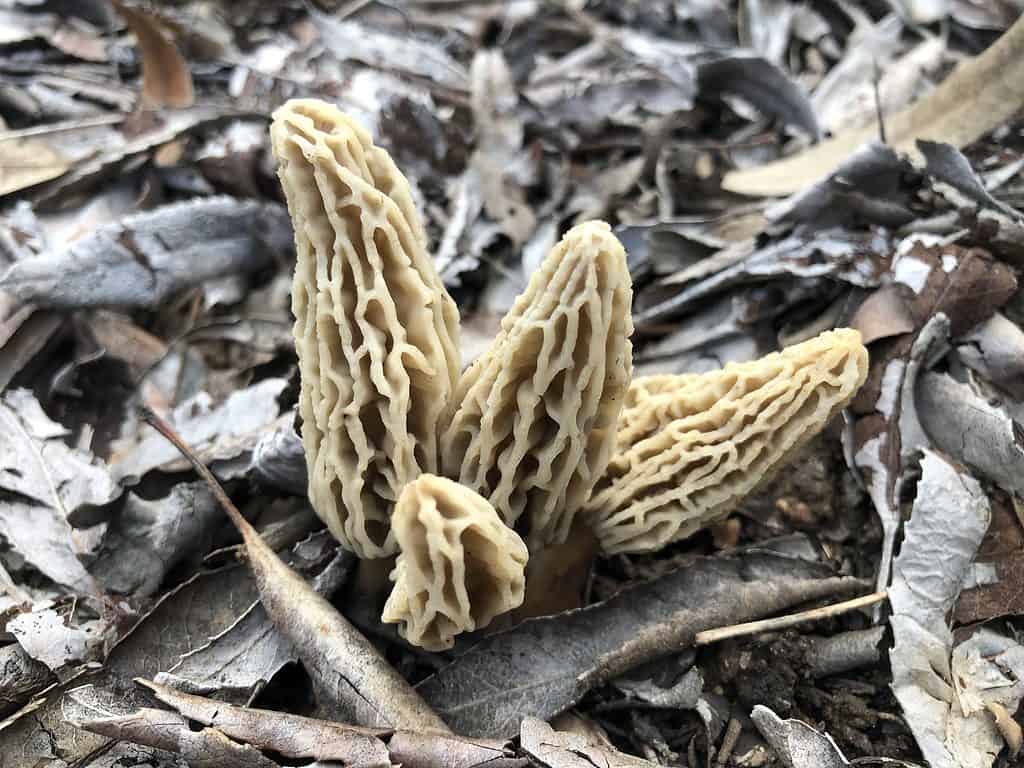In recent years, growing and selling gourmet mushrooms has churned out impressive profits for several small and large commercial mushroom farms in the U.S. If you’re interested in the world of gourmet mushroom growing, or are simply curious about which popular, edible mushrooms are worth money, you’ve come to the right place.
In this guide, we’ll delve into four species of mushrooms that are worth money, with a focus on U.S. markets. Additionally, we will focus on cultivatable mushrooms.
Read on to learn more.
1. Shiitake Mushrooms (Lentinula edodes)

Shiitakes are one of the most cultivated mushrooms in the world.
©Saravut Biacharas/Shutterstock.com
In the U.S., especially in the northeast, several small farms are cultivating shiitake mushrooms (Lentinula edodes) to sell to restaurants, wholesalers, and farmer’s markets. Worldwide, shiitakes are one of the top three most cultivated mushrooms. These lovely mushrooms are packed with a wonderfully rich flavor reminiscent of savory, nutty meat. Their texture is meaty and firm.
Native to East Asia, the shiitake mushroom is now popular around the world and is an excellent choice of gourmet mushroom to grow in temperate environments. Currently, in the U.S., fresh local shiitakes sell in most markets at about $15-20 per pound.
You can cultivate them both indoors and outdoors. Outdoors, grow on hardwood logs that must incubate for 6-24 months before they begin producing fruit. Once the log is inoculated, it can continue producing flushes of shiitake mushrooms for several years, depending on the diameter of the log. Indoors, growers typically cultivate shiitakes on sterilized hardwood sawdust bags. When grown indoors, the process is much faster. Usually, the process from inoculation of a sawdust block to fruiting time takes about 2-3 months.
2. Mushrooms that are Worth Money: Oyster Mushrooms (Pleurotus spp.)

Due to their relative ease of cultivation, many gourmet mushroom growers choose to cultivate oyster mushrooms, such as
Pleurotus citrinopileatus.
©Miriam Doerr Martin Frommherz/Shutterstock.com
Oyster mushrooms are a popular choice for most edible mushroom cultivators, especially if they grow an assortment of species. These mushrooms are cultivated very quickly, especially indoors. There are several species within the Pleurotus genus that you can cultivate. The most popular to grow are the common oyster mushroom (Pleurotus ostreatus), pink oyster (Pleurotus djamor), golden oyster (Pleurotus citrinopileatus), blue oyster (Pleurotus columbinus), and king trumpet (Pleurotus eryngii).
Oyster mushrooms are well-loved for their meaty texture and seafood-like taste. The exception to this under-the-sea flavor is the pink oyster mushroom, which many people love for its flavor reminiscent of bacon.
The cultivation practices of these mushrooms vary, mostly based on incubation and fruiting temperature requirements. The king trumpet mushroom is also a bit more susceptible to contamination, and growers typically opt to cultivate this species on a sterile substrate. It isn’t grown nearly as commonly as the rest in the U.S. The other above-named species, however, typically grow robustly on pasteurized straw substrates.
Depending on the species, these mushrooms can sell at market for about $10-20 per pound.
3. Lion’s Mane Mushroom (Hericium erinaceus)

Lion’s mane mushroom is a popular choice among medicinal mushroom growers.
©Gertjan Hooijer/Shutterstock.com
Widely popular among growers of mushrooms purported to have medicinal benefits, lion’s mane (Hericium erinaceus) can be sold in tincture, capsule, and powder form. However, many people also appreciate this mushroom for its culinary value. Lion’s mane is often described as having a mild, sweet, and earthy flavor. Reminiscent of lobster or crab.
This shaggy-toothed mushroom is native to temperate, hardwood forests across North America, Europe, and Asia. It grows on weakened and dead broad-leaf trees such as beech, maple, oak, walnut, and sycamore.
Most cultivators grow lion’s mane indoors on sterilized hardwood sawdust substrates. You can also grow them on logs in the same manner as shiitake mushrooms. However, like shiitakes, they will take much longer to fruit when cultivated on logs than on sterilized sawdust.
When sold whole and fresh in markets, Hericium erinaceus typically sells for $14-16 per pound. Most companies sell lion’s mane tinctures for $20-30 or more per ounce.
4. Mushrooms that are Worth Money: Blushing Morel (Morchella rufobrunnea)

is one of the only morel species currently cultivatable.
©Nina House, CC BY 4.0 <https://creativecommons.org/licenses/by/4.0>, via Wikimedia Commons – Original / License
The blushing morel (Morchella rufobrunnea), aka the landscape morel, is the most easily and widely cultivated of its genus. While some species of morels have thus far resisted cultivation, perhaps due to having mycorrhizal associations with certain species of trees, the blushing morel is predominantly saprobic. This means that Morchella rufobrunnea acquires its nutrients through decomposing dead organic matter. In the case of the blushing morel, it typically grows naturally in mulched landscapes and disturbed areas with heavily decomposed wood.
For those successful in cultivating this species of morel, the price you can obtain per pound depends on the availability of morels in your area and the time of year. Generally, the average price per pound in U.S. markets of fresh Morchella rufobrunnea is around $15-20 per pound. Other species of Morchella that are not currently cultivatable can sell for much more.
The photo featured at the top of this post is © Martina_L/Shutterstock.com
The information presented on or through the Website is made available solely for general informational purposes. We do not warrant the accuracy, completeness, or usefulness of this information. Any reliance you place on such information is strictly at your own risk. We disclaim all liability and responsibility arising from any reliance placed on such materials by you or any other visitor to the Website, or by anyone who may be informed of any of its contents. None of the statements or claims on the Website should be taken as medical advice, health advice, or as confirmation that a plant, fungus, or other item is safe for consumption or will provide any health benefits. Anyone considering the health benefits of particular plant, fungus, or other item should first consult with a doctor or other medical professional. The statements made within this Website have not been evaluated by the Food and Drug Administration. These statements are not intended to diagnose, treat, cure or prevent any disease.
Thank you for reading! Have some feedback for us? Contact the AZ Animals editorial team.







